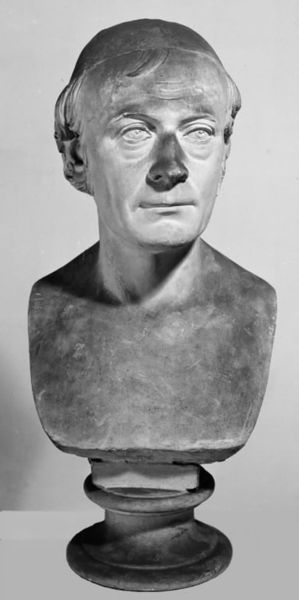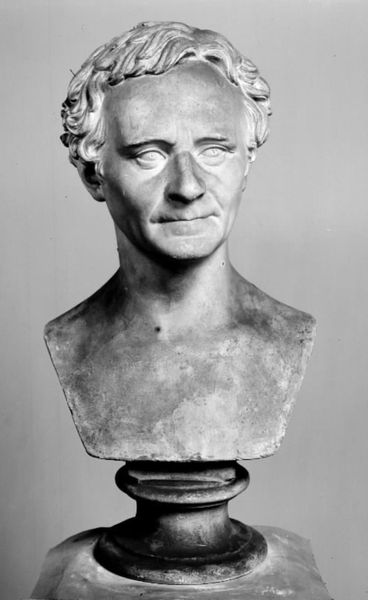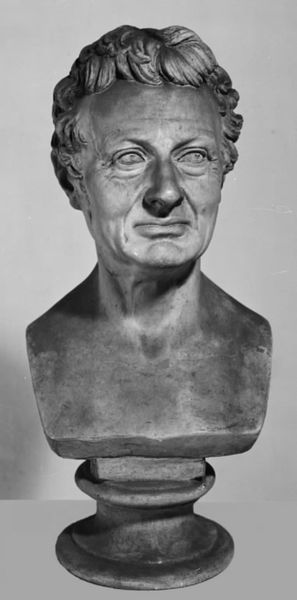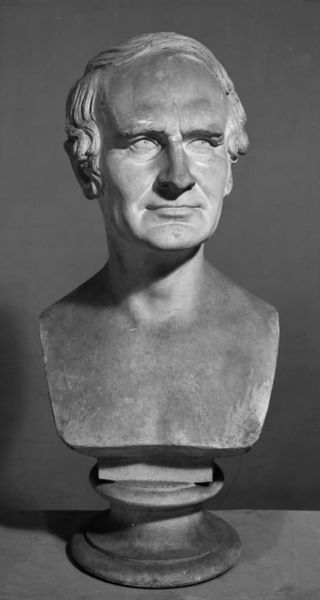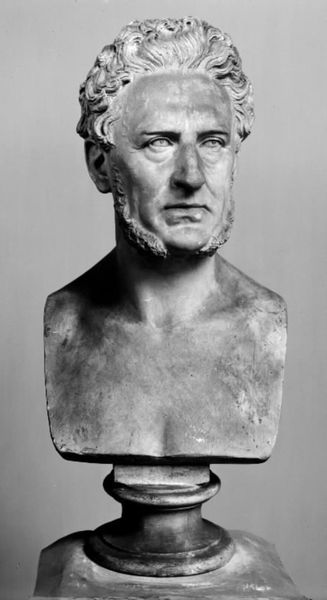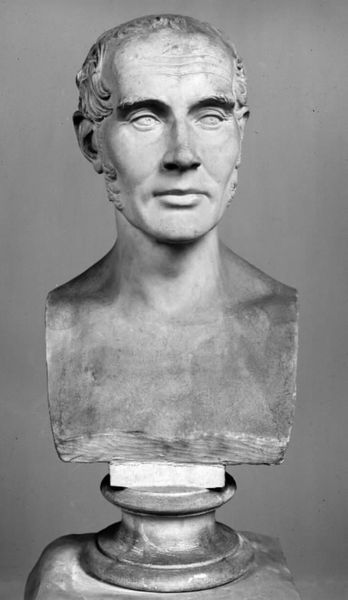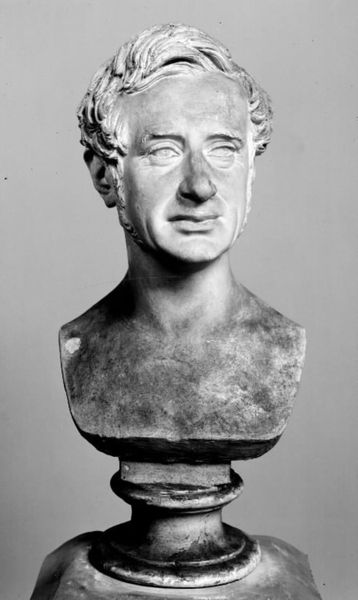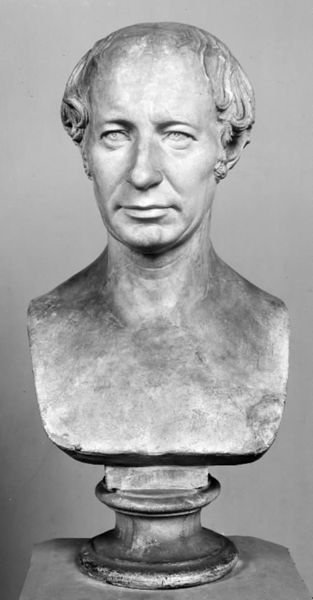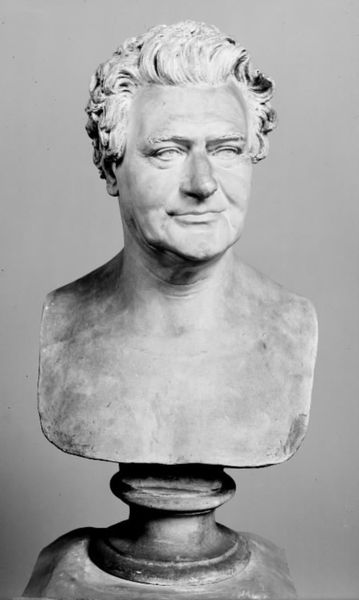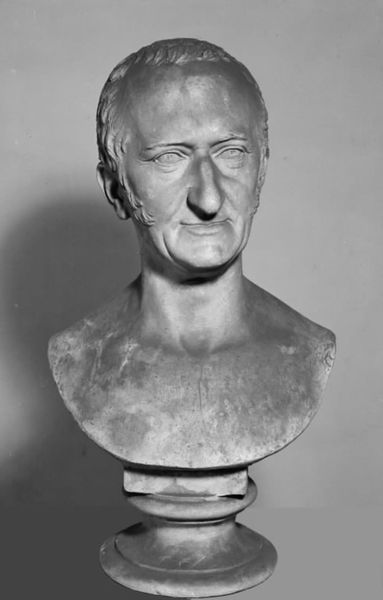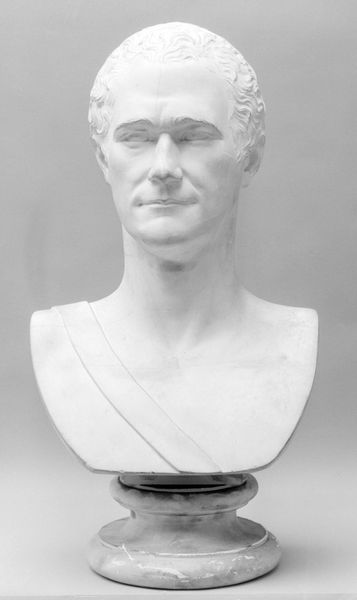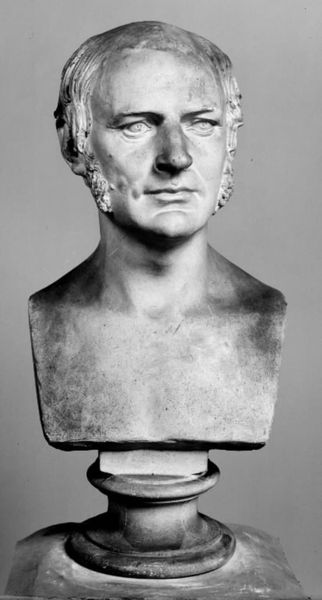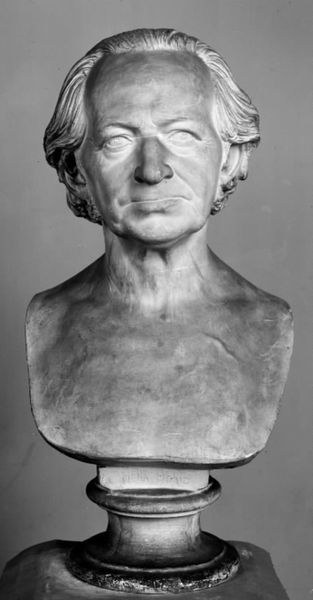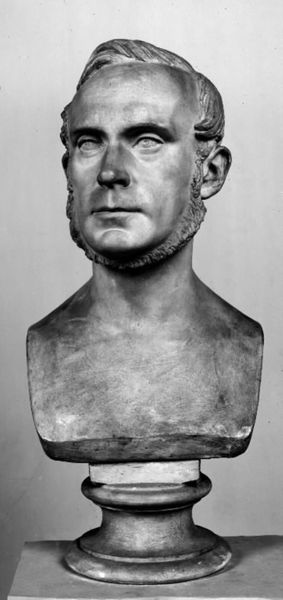
sculpture, marble
#
portrait
#
portrait
#
classicism
#
sculpture
#
marble
#
statue
Dimensions: 65.3 cm (height) (Netto)
Curator: Here we see "Borgmester i Ringsted Conrad Johan Christian Harhoff," a marble sculpture created in 1864 by H.W. Bissen, residing here at the SMK. What is your initial read? Editor: Austere. The smooth, cool surface of the marble gives him an almost detached air. The lines of his brow suggest deep thought or perhaps… slight disapproval? Curator: Indeed. Marble, particularly in classicism, inherently lends an air of timelessness and authority. It speaks of permanence, echoing back to ancient Roman portraiture where civic virtue was paramount. Harhoff, as a mayor, would likely have appreciated that association. Editor: And the execution is incredibly precise. Look at the subtle undercutting around the eyes and mouth. Bissen’s mastery over the medium allows for such nuanced expressiveness, it elevates this beyond a mere likeness. Semiotically, we’re receiving deliberate signs of power. Curator: The subtle signs, yes. Bissen was deeply immersed in neoclassical ideals, valuing balance, restraint, and fidelity to the subject's character. He’s not just showing us Harhoff's features, but hinting at his moral bearing and leadership qualities. Do you think, though, that perhaps there is a romanticized view here? Editor: It’s unavoidable. Even with Bissen’s objective rendering, the marble itself has cultural weight, referencing a lineage of heroic depiction. So even while the modeling might suggest realism, it is also inherently imbued with idealization. I also find the treatment of hair striking, as there is motion conveyed despite being solid. Curator: Notice, too, how his gaze seems to hold your own regardless of your position in the room, speaking to the enduring influence a figure like a mayor has within the cultural memory of Ringsted. Symbols like this helped solidify identity. Editor: Precisely. The artwork, in a way, transcends individual likeness to act as a signifier of civic responsibility—even across time. The interplay of formal construction and embedded meaning is certainly compelling. Curator: It gives us much to ponder about legacy, influence, and how we choose to be remembered. Editor: It's fascinating how studying its material qualities opens doorways to contemplating the cultural values of 19th-century Denmark.
Comments
No comments
Be the first to comment and join the conversation on the ultimate creative platform.
